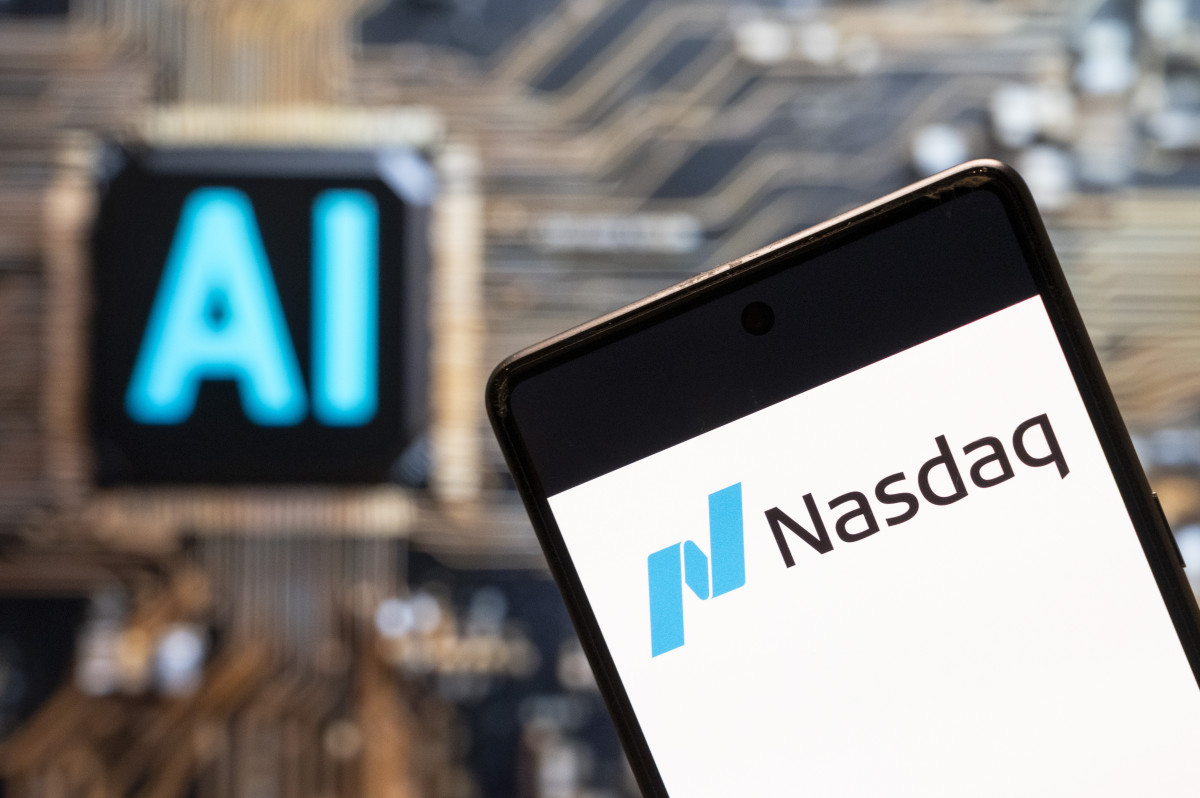
Nvidia shares extended their recent run of gains in Tuesday trading, while powering a broader advance in the market's most important sector, following a detailed update on chip-stock prospects from KeyBanc Capital Markets.
Nvidia (NVDA) , which powered around a third of the S&P 500's first-half advance, has been the prime beneficiary of an AI-investment surge that has transformed the chip sector while adding nearly $2 trillion to its overall market value.
Related: Analysts reboot Microsoft stock price target on AI transformation
Demand for its market-leading processors and semiconductors, as well as the hype surrounding the launch of its new Blackwell system, has catapulted Nvidia into one of the world's biggest stocks, with a market value of $3.1 trillion.
And in turn these factors have dragged rival chipmakers such as Advanced Micro Devices (AMD) and Micron Technology (MU) to outsized first-half gains.

The Philadelphia Semiconductor Sector index, the market's industry benchmark, has risen more than 38% this year, more than double the advance of the S&P 500. The chip index hit a record 5,826.16 points early in Tuesday trading.
KeyBanc: Artificial-intelligence demand robust
KeyBanc's lead sector analyst, John Vinh, says AI demand will continue to drive further gains over the back half of the year and beyond, even as China and auto-sector demand struggles to gain momentum.
That said, Vinh argues that "server supply chain feedback indicates that traditional server demand continues to improve." In a note published Tuesday the analyst issued a host of price-target changes and ratings upgrades for stocks across the sector.
Related: Analyst revisits Nvidia stock price target after Blackwell checks
"Most of the demand is being driven by major U.S. cloud providers, with server partners noting demand is upticking at Meta and Microsoft, but we’re also seeing sustained demand by China [cloud-service providers] and moderately improving demand within enterprise," Vinh said.
These so-called hyperscalers, which also include Google parent Alphabet and Amazon, are poised to spend around $92 billion this year alone building out their massive computing infrastructure.
The investment reflects their clients' moves to leverage their datasets to increase sales of everything from drive-through dining to the most complicated pharmaceutical testing services.
That's helping Nvidia, which this spring launched the Blackwell line of computing processors, which are likely to replace the company's benchmark H100 chips and drive consistent revenue gains.
Vinh boosted his price target on Nvidia $50 to $180 a share, while affirming his overweight rating, saying that current demand for its GB200 chips should support data-center revenue of around $200 billion this fiscal year.
"Despite the impending launch of Blackwell in [second-half 2024], we are not seeing any signs of a demand pause as demand for H100 remains robust, as we continue to see rush orders (and) the interest and demand in GB200 is greater than we initially had sized," Vinh and his team said .
Micron gets a boost
Vinh also lifted his price target on Micron by $5 to $165 a share, citing the revenue potential from its high-bandwidth memory, or HBM, chips, which improve performance and reduce power consumption in AI systems.
Those chips, including a new HBM3e iteration, are now being built into Nvidia's H200 processors, as well as its newly developed Blackwell systems. The moves have established Micron as one of just a few global companies that can compete in this fast-growing market.
Related: Analysts revise Micron stock price targets after earnings
Vinh said there are "indications Samsung is struggling to get qualified at Nvidia on HBM3e given performance and manufacturing yield issues and [is] unlikely to have material share on Blackwell."
"We believe this will support MU gaining outsized share on HBM3e, which likely will exceed its traditional DRAM share," he added.
AMD price target clipped
For Advanced Micro Devices, however, Vinh said that "inventory destocking headwinds" and weak demand in the chipmaker's 'embedded systems' segment could offset gains from its new MI300X, a graphics-processing unit designed to support generative-AI technologies.
Other tech analysts say AMD's MI300X carries more memory with speed than Nvidia's top-selling H100.
More AI Stocks:
- Analyst adjusts Nvidia stock rating on valuation
- Analyst revises Facebook parent stock price target in AI arms race
- Google falling behind climate goals thanks to AI ramp up
"We still see demand for 500,000 MI300X GPUs, while our 2024 GPU estimate remains unchanged at just over $6 billion and expect this to be a source of near-term upside as it continues to ramp," Vinh said after lowering his price target on the stock by $10 to $220 a share while keeping his overweight rating in place.
Nvidia shares were marked 2.48% higher by closing bell to settle at $131.38 each, extending their one-month gain to around 9.1%.
AMD shares, meanwhile, slipped 0.89% to $177.10 each while Micron rose 0.34% to $131.14 each.
Related: Veteran fund manager sees world of pain coming for stocks







